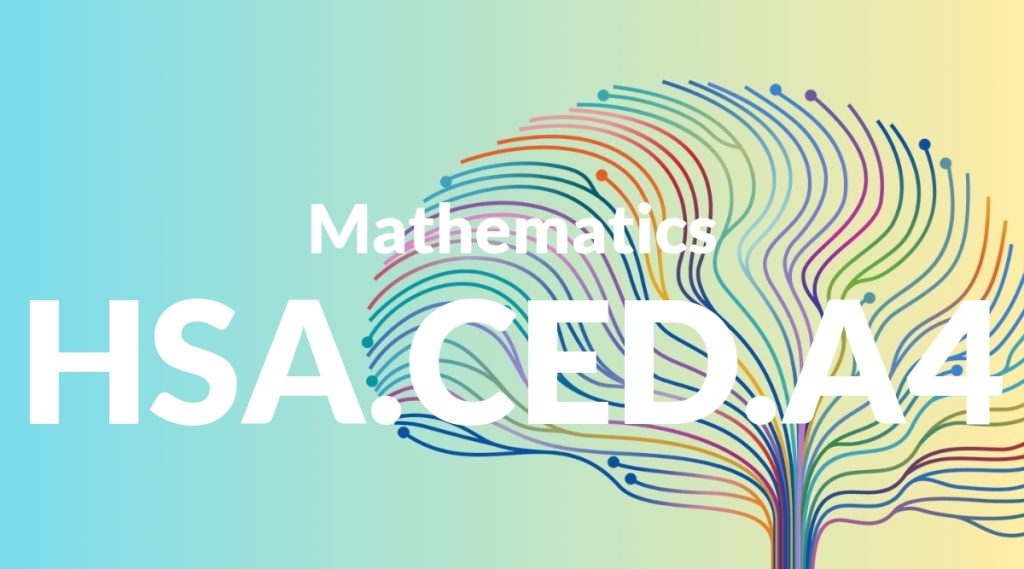Standard: HSA.CED.A4 – Rearrange formulas to highlight a quantity of interest, using the same reasoning as in solving equations. For example, rearrange Ohm’s law V = IR to highlight resistance R.
Grade level: High School: Algebra
Subject: Mathematics
Domain: Creating Equations
Teacher Overview
This standard focuses on the ability to manipulate and rearrange algebraic formulas to isolate a specific variable. This skill is crucial in many real-world applications, such as physics, engineering, and economics, where formulas are used to solve for different quantities. Mastery of this standard helps students develop a deeper understanding of algebraic relationships and prepares them for more advanced mathematical concepts. Students should have a solid grasp of basic algebraic operations and the ability to solve simple linear equations. They should also understand the concept of variables and how they can represent different quantities.
By mastering the skill of rearranging formulas, students will be better equipped to handle more complex algebraic problems and will be prepared for advanced topics in mathematics and science, such as calculus and physics.
Common Misconception 1
One common misconception is that rearranging a formula changes the relationship between the variables. This is incorrect because the fundamental relationship remains the same; only the presentation of the equation changes.
Intervention 1
To address this misconception, provide students with multiple examples where they rearrange formulas and then substitute values to show that both the original and rearranged formulas yield the same results.
Common Misconception 2
Another misconception is that there is only one correct form of a formula. This is not true, as many formulas can be rearranged in different ways to solve for different variables.
Intervention 2
Encourage students to practice rearranging a variety of formulas and discuss how each form can be used in different scenarios. Highlight the flexibility and utility of having multiple forms of the same equation.
Prerequisite Knowledge
Students should have a foundational understanding of basic algebraic operations, including addition, subtraction, multiplication, and division. They should also be familiar with solving simple linear equations and the concept of variables.
Subsequent Knowledge
After mastering this standard, students will develop skills in more complex algebraic manipulations, such as solving systems of equations and working with quadratic equations. They will also be better prepared for advanced topics in calculus and physics.
Instructional Activities
- Practice problems that involve rearranging various algebraic formulas.
- Group activities where students solve real-world problems using rearranged formulas.
- Interactive online tools that allow students to manipulate formulas and see the results.
- Class discussions on the importance and applications of rearranging formulas in different fields.




